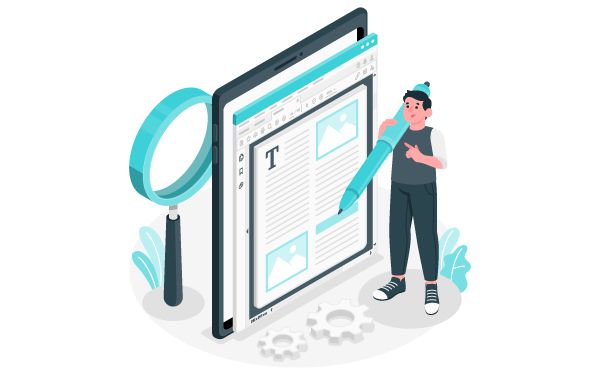How eCTD Publishing Tools Are Transforming Regulatory Submissions

In today’s fast-paced regulatory landscape, pharmaceutical companies and regulatory professionals are constantly on the lookout for tools to streamline and optimize their workflows. One of the most groundbreaking advancements in this field is the adoption of eCTD publishing tools. These tools are not only reshaping the way submissions are prepared but are also setting a new standard for efficiency, compliance, and scalability in document management.
Whether you’re using advanced publishing software, leveraging the capabilities of PDF publishing software, or exploring automated publishing software solutions, the transformation in regulatory submissions is hard to overlook. In this blog, we’ll dive deep into how these tools are changing the game, their key features, and why they are indispensable in today’s regulatory environment.
What is eCTD and Why Does it Matter?
The electronic Common Technical Document (eCTD) is a standardized format for submitting applications, amendments, and reports to regulatory authorities. This digital framework has replaced traditional paper submissions, enabling faster, more organized, and compliant regulatory processes.
Why eCTD Matters
- Standardization: eCTD ensures uniformity across documents, reducing errors and streamlining review processes.
- Global Acceptance: Adopted by major regulatory authorities like the FDA, EMA, and Health Canada, it facilitates international submissions.
- Efficiency: With tools like automated publishing software, eCTD submissions eliminate manual errors, saving both time and resources.
The Role of eCTD Publishing Tools
Simplified Document Compilation
Manually organizing documents for regulatory submissions is tedious and prone to errors. eCTD publishing tools automate this process, ensuring documents are properly formatted and structured according to regulatory guidelines.
Features to Highlight:
- Automatic metadata generation for PDFs
- Tools for seamless linking and bookmarking in PDF publishing software
- Real-time validation to ensure compliance with regional regulations
Enhanced Collaboration
Large-scale regulatory submissions often require input from multiple stakeholders. eCTD publishing tools simplify collaboration by offering:
- Centralized platforms where teams can upload, edit, and review documents.
- Version control to track changes effectively.
- Integration with existing publishing software for smooth workflows.
“Collaboration in regulatory submissions is not just a convenience – it’s a necessity. eCTD tools make teamwork not only possible but efficient.”
Automated Validation and Compliance
Compliance is non-negotiable in regulatory submissions. Even a small formatting error can result in delays. eCTD publishing tools, equipped with validation engines, ensure:
- Automatic checks for regulatory guidelines.
- Identification of errors in real-time.
- Reduced chances of submission rejections.
Real-World Example:
A leading pharmaceutical company implemented automated publishing software and reduced its submission error rate by 70%, saving both time and costs.
Key Benefits of eCTD Publishing Tools
1. Time Efficiency
With automation, tasks that once took days can now be completed in hours. For example:
- Converting documents to PDF using PDF publishing software takes minutes
- Indexing, hyperlinking, and validation processes are streamlined with a few clicks
2. Cost Savings
Automation reduces reliance on manual labor and external consultants. Additionally, the ability to validate documents in-house saves money on re-submissions.
3. Improved Data Integrity
eCTD publishing tools create a consistent, traceable document repository. This ensures:
- Data accuracy throughout the submission lifecycle
- Quick retrieval of documents during audits or reviews
- Automatic data validation reduces errors
- Built-in security features protect sensitive information
- Document versioning ensures accuracy across updates
Choosing the Right eCTD Publishing Tool
Key Features to Look For
- User-Friendly Interface: Simplifies onboarding and daily usage
- Integration Capabilities: Works seamlessly with existing publishing software
- Scalability: Adapts to the needs of growing organizations
- Regulatory Compliance Updates: Includes automatic updates for changes in global submission guidelines
How Automated Publishing Software Complements eCTD Tools
While eCTD publishing tools handle regulatory requirements, automated publishing software enhances the overall workflow by:
- Automatically converting multiple file types into compliant formats
- Reducing manual intervention in routine tasks like bookmarking and hyperlinking
eCTD in the Future: Trends to Watch
- AI-Powered Automation: The next generation of eCTD tools will use AI to predict errors and suggest optimizations
- Cloud-Based Solutions: Enhanced security and collaboration in real-time
- Integration with Other Systems: eCTD tools will likely integrate more deeply with CRM and ERP systems to offer a unified platform for document management
Conclusion
The shift from traditional paper submissions to digital frameworks like eCTD has been revolutionary for the regulatory field. With advanced eCTD publishing tools, companies can not only meet compliance standards but also streamline their processes, reduce costs, and ensure greater accuracy in submissions.
For organizations aiming to stay ahead in the regulatory landscape, adopting the right tools is crucial. Solutions like PDF publishing software and automated publishing software offer the perfect blend of innovation and efficiency, making the transformation not only beneficial but necessary.
Check Please+Publish to explore cutting-edge publishing software and tools that can redefine your regulatory submission workflows.
Get the latest updates from Please+Publish
Recent Blogs
Previous Post
Next Post
CONNECT WITH US

Let's talk about how Please+Publish can help you








